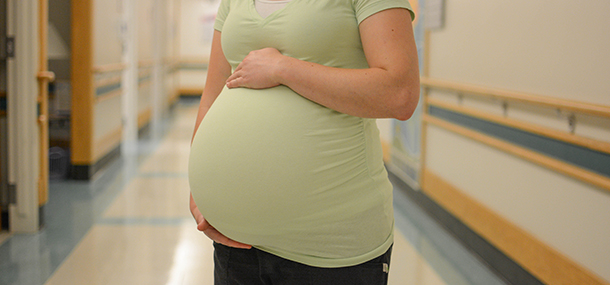

Here at Cincinnati Children’s we perform ultrasound and magnetic resonance imaging (MRI) on pregnant women every day. That is because Cincinnati Children’s Fetal Care Center is a large referral in the evaluation of babies in the womb who have been diagnosed with a problem before birth. Our fetal care center is one of the most innovative in the country, providing surgical and medical interventions that can change the outcome before birth. We as imagers are in alignment with this goal, performing research to guide the care of these small individuals.

 Image: Baby with myelomeningocele with spine open to a large sac on the lower back
Image: Baby with myelomeningocele with spine open to a large sac on the lower back
At our institution, we offer closure of open spine defects not covered by skin in babies while in the womb. The baby is pulled out of the mom, the opening is closed, and the baby is then placed back in the mom. It is important to know if the opening is covered by skin, as these babies do not need the surgery. We have looked at the MRI on babies and have confirmed that we are able to determine the presence or absence of skin over the opening.
 Image: Baby with congenital diaphragmatic hernia with bowel and stomach in the left chest
Image: Baby with congenital diaphragmatic hernia with bowel and stomach in the left chest
Many of our babies also have abnormalities that affect the growth of the lung while in the womb. Congenital diaphragmatic hernia is when the bowel, liver and spleen in the abdomen move into the chest. This prevents normal growth of the lung. With MRI, we are able to see the lung in the baby and calculate the amount present in the chest. We are doing research in these techniques to determine which measurements are important. With this information, we can help guide when, where, and what medical care will be necessary at the time of birth.
Our research continues to support our fetal care center so that the best care can be provided for these babies before birth.
Contributed by Dr. Beth M. Kline-Fath and edited by Sarah Kaupp, (RRA).